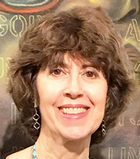“State by State, There’s No Place Where There Are No Environmental Justice Concerns”
Research consistently shows that low-income and communities of color are most adversely affected by fine particulate matter or soot. There are 100,000 premature deaths yearly from air pollution related to cancers, respiratory and cardiovascular disorders, blood infections, and kidney damage. Soot pollution penetrates deep into the lungs.
Negative birth outcomes among women of color include miscarriages. For Black babies, air pollution can lead to premature births, lower birth weight, and neurocognitive impacts as particulate matter can reach the developing fetal brain.
Recently, the Bullard Center convened a team of experts from Historically Black Colleges and Universities (HBCU), to develop a supplement to the government’s pollution screening tool, which it believes has diluted the focus on communities of color.
Although the Clean Air Act has made inroads and improvements, the latest reports underscore problems on the ground. New scientific studies pinpoint how innovative strategies could remove air pollution inequalities from the equation.
Academics at the University of Washington have looked at this issue for several years. One of the senior authors of the 2021 “Disparities in Air Pollution Exposure in the United States by Race/Ethnicity and Income, 1990–2010” study is Julian Marshall, a professor at the University of Washington in civil and environmental engineering. He has noted, “If we go state by state, there’s no place where there are no environmental justice concerns.”
Why? Because underprivileged neighborhoods are downwind of sitings for factories, traffic (think Bronx’s Asthma Alley), wildfires, and specific agricultural activities—including the use of toxic pesticides.
10 Worst US Locations for Soot Pollution
Marshall, also a co-director of the Center for Air, Climate, and Energy Solutions, was an advisor to the Guardian, which recently published a story naming the ten worst locations in the United States based on extreme levels of soot. Based on data from 2011 through 2015, the metrics are the latest figures available. Pollution findings remain stable for years, so the results are current. The article also includes an interactive tool, allowing readers to see how where they live measures up.
There is a lot to unpack. However, by examining the results for the three most distressed locations, the match between disadvantaged communities and the high rate of contaminated air is easily illustrated.
A look at the entire map of the country pinpoints the Bakersfield area, in the Central Valley of California, as the worst place in America. The environs are home to extensive agricultural activity. In addition to airborne pollution from other parts of the state, the surrounding mountain ranges trap and confine industrial emissions. Legal groups are using the courts to push the EPA to enforce the Clean Air Act to the fullest. As always, affluent voters have the most clout. When hovering over the Tulare County “census tract,” where the pollution is at the top levels, it shows that the population is 78 percent people of color.
California consistently tops lists for dismal results, including the 2022 American Lung Association rundown on the most polluted places for annual particle pollution. South Los Angeles was the number two hot spot on the Guardian map. It included the city of Compton, which has a Latino and Black majority of residents. In January 2023, a research paper outlined how pollution emitted from cars driven by “commuters from majority-white tracts disproportionately drive through non-white tracts–compared to the inverse.” Following the same premise as the constructs of red-lining and heat islands, urban planners built freeways to intersect minority communities and keep roadways out of neighborhoods like Beverly Hills. The authors state: “Decades of racist planning decisions in Los Angeles have contributed to today’s injustices in transport, health, and environmental quality.” In their conclusion, they underscore: “Race significantly predicts pollution exposure, even when controlling for a full set of related variables.”
The story is the same for Chicago’s South and West sides, ranked at number three. In Cook County, the population is 99 percent people of color, and the particulate matter pollution is exceedingly high. Chicago also has two Superfund sites. Part of the problem is that dirty industries are “steered” toward locations based on zoning and land use policies. The result is toxic manufacturing bunched in one area.
So how can the average citizen push back against being a victim of living in a sacrifice zone?
They must ensure that their elected representatives prioritize the health of constituents through tightened regulations, supporting stringent zoning laws for industries, and banning operations that can cause detriment. President Biden and EPA administer Regan must set stronger soot pollution standards.
It’s time for people over profits, especially those who are already overburdened.
This article originally appeared on Moms Clean Air Force



